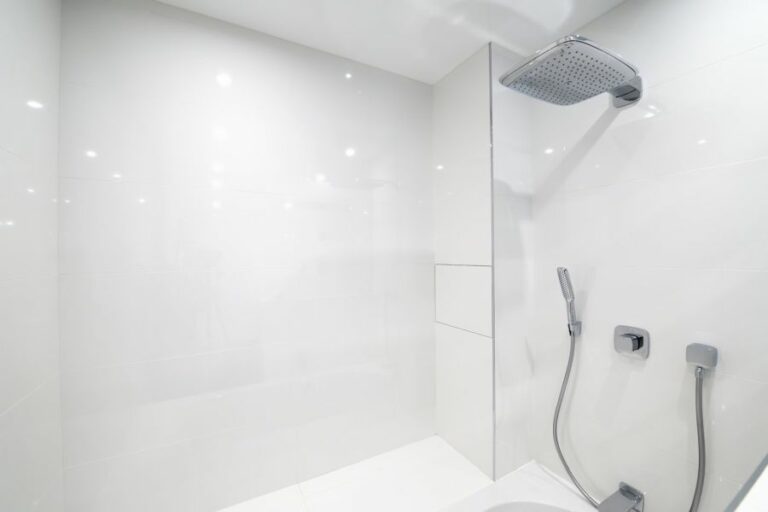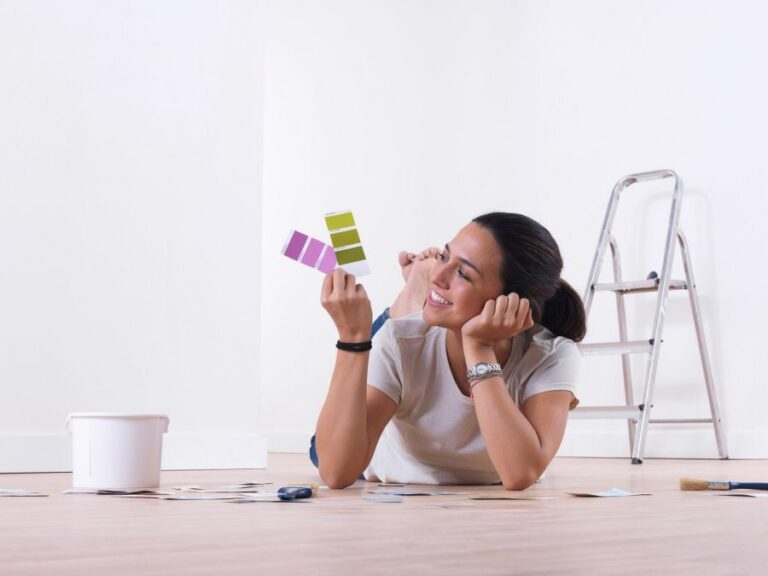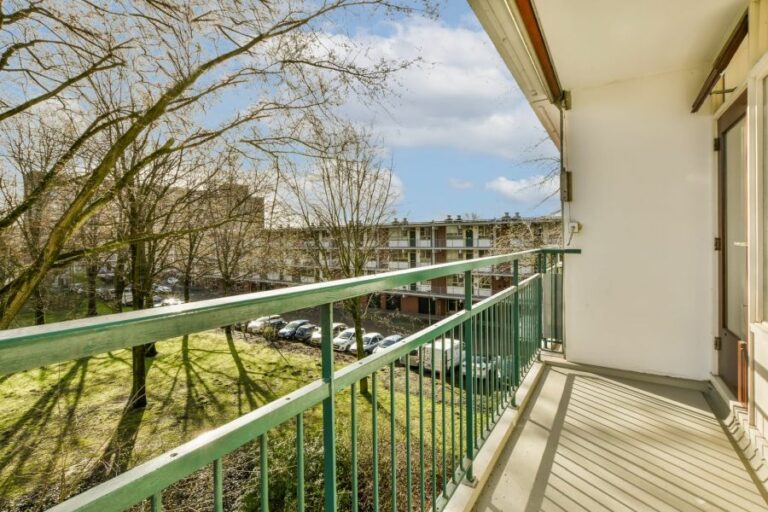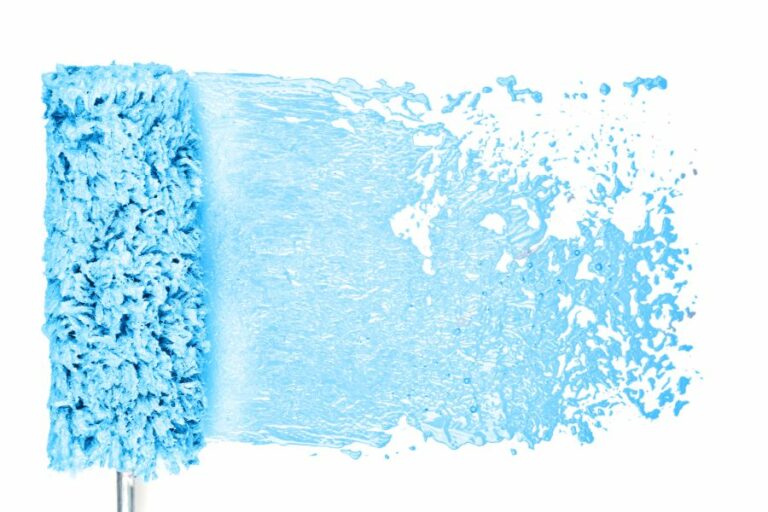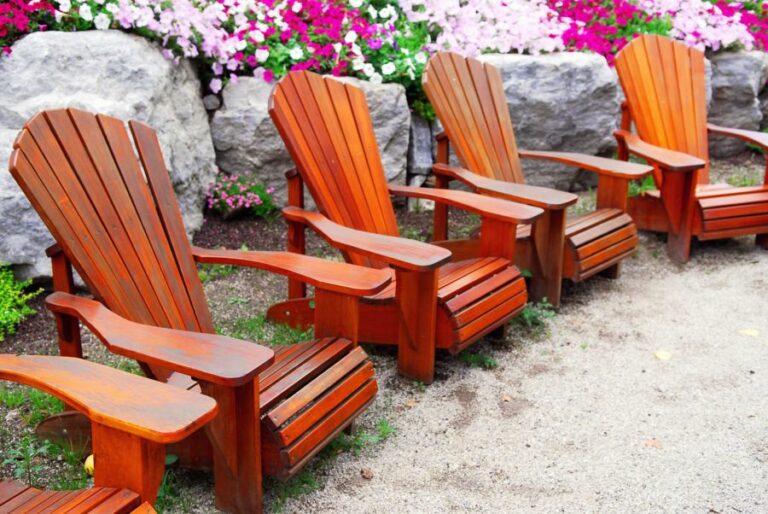Outdoor Wood Paint Colors, 25 Things You Should Know
Welcome to a vibrant world of outdoor wood paint colors! Whether you’re looking to enhance the beauty of your cozy bungalow or add a touch of character to your garden retreat, the perfect hue awaits. Explore versatile color options that look stunning and protect your wooden surfaces from the elements.
Outdoor wood paint colors:
Painting exterior wood can enhance your home’s appearance and protect surfaces from the elements. Choose a paint color that matches your design theme, surroundings, and sun exposure while considering personal preference. Popular outdoor wood paint colors include natural wood tones, earthy colors, and bold modern shades. To achieve a professional finish, prepare and prime the surface, use high-quality exterior wood paint, and apply it in thin, even layers.

Discover the perfect outdoor wood paint colors to transform your space, enhance curb appeal, and protect your wooden surfaces. Read on for more inspiration, expert guidance, and our top recommendations for creating stunning, durable color schemes outdoors.
Contents
- 1 Exterior Wood Paint Color Options
- 2 What is the Optimal Type of Paint for Exterior Wooden Surfaces?
- 3 What is the Most Effective Outdoor Paint for Wood Surfaces Exposed to Direct Sunlight?
- 4 Which Paint Color Most Closely Resembles the Appearance of Wood?
- 5 Determining the Most Suitable Paint Color for Wooden Surfaces
Exterior Wood Paint Color Options
• Give Your Exterior Wood a Fresh and New Look
Painting exterior wood can dramatically affect the overall appearance of your home or outdoor space, providing protection from the elements and bringing new life to tired, old, or worn surfaces.
• Choosing the Right Outdoor Wood Paint Color
When painting your outdoor wood surfaces, the right color can make all the difference. Consider the following factors when selecting the perfect shade:
– Style and Design Theme
Think about your home or outdoor space’s overall style and design theme. Consider earthy tones or classic wood stains if you have a traditional or rustic aesthetic. For more modern or minimalist styles, sleek monotone colors or bold contrasts work well.
– Surrounding Environment
Take the surrounding environment into account when selecting your paint color. Choose a color that complements the natural hues of your garden, landscaping, or neighboring buildings.
– Sun Exposure
Sun exposure plays a role in how your paint color will appear in different lighting situations. Lighter colors may appear brighter and more intense in direct sunlight, while darker hues may appear more subdued.
– Personal Preference
Ultimately, what matters most is your personal preference and what you think will look best on your wood surfaces. Don’t be afraid to experiment with different color options until you find the perfect fit.
• Popular Outdoor Wood Paint Colors
Below is a list of outdoor wood paint colors that are popular choices for various projects:
– Natural Wood Tones
- Walnut: A deep, rich brown color that adds warmth and sophistication to any wood surface
- Mahogany: A reddish-brown hue suitable for both traditional and modern design themes
- Oak: A lighter, golden-brown color that resembles the natural appearance of oak wood
- Cedar: A reddish, warm wood tone that complements wood with natural red undertones
– Earthy Colors
- Forest Green: A deep, rich green that evokes the beauty of a lush forest
- Sage Green: A muted, earthy green that adds a calming effect to your outdoor space
- Terracotta: A reddish-brown color reminiscent of traditional clay pottery
- Stone Grey: A neutral, mid-tone grey that provides a timeless and versatile look
– Bold and Modern Colors
- Black: A sleek, sophisticated choice for modern design themes that offers a striking contrast against lighter surroundings
- White: A clean, crisp, and contemporary color that works well on outdoor wood surfaces and complements most design themes
- Navy Blue: A rich, deep shade of blue that adds a touch of elegance to your outdoor space
- Charcoal Grey: A dark, intense shade of grey that works well for a modern and minimalistic look
• Ensuring a Professional Finish
Follow these pro tips to achieve a flawless finish on your outdoor wood surfaces:
– Prepare the Surface
Proper preparation is essential to ensure a smooth, even finish. Start by cleaning the surface with a mild soap solution to remove dirt and debris, then rinse thoroughly with water. Allow the wood to dry completely.
Sand the surface lightly to remove loose or peeling paint, and repair damaged areas with wood filler.
– Prime the Surface
Using a high-quality exterior wood primer ensures better paint adhesion and longer-lasting results. Apply one coat of primer, following the manufacturer’s instructions for drying times.
– Choose the Right Paint
Select a high-quality outdoor wood paint suitable for your chosen color and desired finish. Using paint designed specifically for exterior wood surfaces is essential, as this provides extra protection against the elements.
– Apply the Paint
Using a good quality brush or paint sprayer, apply two thin coats of paint, allowing each coat to dry according to the manufacturer’s instructions. Thin, even layers ensure a smooth finish and reduce the risk of paint peeling or cracking over time.
• In Conclusion
Painting your outdoor wood surfaces is an excellent way to refresh and enhance your home’s exterior. Selecting the perfect color can make all the difference in achieving the desired look and style.
Consider factors such as design theme, surrounding environment, sun exposure, and personal preference when choosing your paint color.
No matter which colors you choose, following the steps outlined above will help ensure a professional, long-lasting finish that enhances your outdoor space for years to come.
What is the Optimal Type of Paint for Exterior Wooden Surfaces?
Ensuring the longevity and beauty of any outdoor wooden surfaces requires the right kind of paint. Although there are numerous options available for outdoor paint, not all of them will provide the desired results for your specific project.
• Importance of Proper Paint Selection
Selecting the right paint for your outside wood projects is crucial for several reasons. It enhances the exterior look of your home or property and protects wooden surfaces from harmful elements such as moisture, UV rays, and extreme temperature changes.
Furthermore, proper paint selection can extend the lifespan of wooden materials, ultimately saving you money on repair and replacement costs.
• Choosing the Right Type of Paint
You must consider several factors to achieve satisfying results when painting outdoor wood. The most important consideration is selecting a paint type that is designed specifically for exterior use. Here are the top types of paint options for outside wooden surfaces:
– Acrylic Latex Paint
In recent years, acrylic latex paint has become the go-to choice for many homeowners and professionals in exterior wood painting projects. This water-based paint offers several benefits, including:
- Excellent adhesion: Acrylic latex paint adheres well to various wooden surfaces, improving durability.
- Long-lasting finish: This type of paint is resistant to cracking, peeling, and fading, maintaining the appearance of your exterior surfaces for an extended period.
- Quick-drying: Acrylic latex paint typically dries within a few hours, allowing you to apply additional coats or finish your project in minimal time.
- Easy clean-up: Since it is a water-based paint, clean-up is simple and can be done with soap and water.
When selecting acrylic latex paint for your outdoor wooden surfaces, ensure that it is exterior-grade and formulated specifically for wood.
– Alkyd Oil-Based Paint
Although not as popular as acrylic latex paint, oil-based paint (also known as alkyd paint) still has a loyal following. It offers the following advantages:
- Durability: Alkyd oil-based paints offer long-lasting results with excellent resistance to wear and tear.
- Smooth application: They glide smoothly on wooden surfaces, making it easy to achieve an even finish.
- Compatibility: Oil-based paints are well-suited for exterior wooden surfaces that were previously coated with oil-based paint.
The main downside of alkyd oil-based paint is that it usually takes longer to dry than its water-based counterparts. Additionally, clean-up requires the use of solvents such as paint thinner or mineral spirits.
• Factors to Consider When Selecting Paint for Your Outside Wood
Aside from choosing the right type of paint, there are additional factors to consider when selecting paint for your exterior wood projects:
– UV Protection
As outdoor wooden surfaces are constantly exposed to sunlight, selecting paint with added UV protection is important. This prevents the paint from fading and maintains the rich color for a prolonged period.
– Moisture Resistance
Wooden surfaces are susceptible to damage from moisture, such as warping and rotting. Hence, using paint that offers good moisture resistance is essential to protect your exterior wooden surfaces from potential water damage.
– Mold and Mildew Resistance
In damp or humid environments, mold and mildew can grow on wooden surfaces, causing damage and leaving an unsightly appearance. Select paint with mold and mildew-resistant properties to avoid such issues and keep your exterior surfaces looking fresh and clean.
– Low-VOC Content
Volatile organic compounds (VOCs) are harmful chemicals found in many paint products. Opt for paint with low or zero VOC content to minimize potential health risks and reduce environmental impact.
• Preparing the Surface for Painting
Before applying paint to your exterior wood surfaces, proper preparation is key to achieving optimal results. Follow these steps to ensure a smooth and long-lasting finish:
- Clean the surface: Remove dirt, mildew, and debris using a pressure washer or scrub brush with a mild detergent.
- Scrape off loose paint: Use a paint scraper or wire brush to remove peeling or chipped paint.
- Sand the surface: Lightly sand the wooden surface to remove any remaining loose paint and create a smooth surface for the new paint to adhere to.
Once the surface is properly prepared, apply a high-quality primer specifically designed for exterior wood surfaces. This creates an ideal base for the paint, ensuring better adhesion and a more uniform finish.
• Conclusion
In conclusion, acrylic latex paint is an excellent choice for most outside wood painting projects, offering impressive durability, quick drying times, and easy clean-up. Be sure to select paint with added UV, moisture, mold, and mildew protection for the best results.
Don’t forget to prepare the surface before painting properly, and remember, investing in high-quality paint can save you time and money in the long run.
What is the Most Effective Outdoor Paint for Wood Surfaces Exposed to Direct Sunlight?
Selecting the right type of outdoor paint for woodwork exposed to direct sunlight can be daunting.
• Importance of Protecting Wood in Direct Sunlight
Sunlight comprises various elements, including ultraviolet (UV) rays capable of causing significant damage to various surfaces, especially wood.
Prolonged exposure to direct sunlight can cause wood to fade, crack, and deteriorate, ultimately diminishing its aesthetic appeal and structural integrity.
Therefore, selecting the ideal outdoor paint that offers adequate protection from the sun’s damaging effects becomes critical in prolonging the wood’s lifespan.
• Key Factors to Consider When Choosing Outdoor Paint for Wood
To ensure you pick the best outdoor paint for wood in direct sunlight, consider the following factors in your selection process:
– UV Resistance
Opt for paints specifically formulated to provide high-level UV protection to shield wood from the sun’s harmful rays. These paints help in preserving wood, maintaining its original appearance while protecting it from damage.
– Durability
Choose a durable paint that can withstand the elements, such as rain, wind, and varying temperatures. High-performance, long-lasting outdoor wood paint will ensure maximum protection and reduce the frequency and cost of repainting.
– Moisture Resistance
Moisture resistance is critical when considering outdoor wood paint, particularly for wood exposed to humid or damp conditions. Paints with water-repellent properties will effectively protect the wood from moisture-related damage, such as rot and warping.
– Finishing Type
Outdoor wood paints come in various finishes, including matte, satin, and glossy. Select a finish that matches the desired aesthetic and complements the wood type and surrounding decor.
• Top Outdoor Paints for Wood in Direct Sunlight
Taking into account the factors mentioned above, here are some of the best outdoor wood paint options that guarantee optimum sun protection and extended durability.
– Latex-Based Paints
Latex-based paints are water-based and known for their exceptional durability and weather resistance, making them an ideal choice for wood in direct sunlight. These paints dry quickly, and their elasticity allows them to expand and contract with wood, reducing the likelihood of cracking and peeling.
I recommend: Behr Premium Plus Exterior Paint & Primer for its excellent UV protection, high-quality finish, and excellent adhesion properties. This paint is available in various sheens, including flat, satin enamel, and semi-gloss enamel.
– Acrylic-Based Paints
Acrylic-based paints offer many of the benefits of latex-based paints while also providing superior UV protection and color retention. They are known for their excellent adhesion, making them suitable for various surfaces, including wood, metal, and masonry.
I recommend: Valspar Duramax Exterior Paint & Primer for its remarkable durability, fade resistance, and early moisture resistance. This paint is available in satin, semi-gloss, and flat finishes.
– Oil-Based Paints
Oil-based paints have been a classic choice for outdoor wood, providing a resilient and hard-wearing finish. However, they take longer to dry, have high VOC emissions, and can contribute to environmental pollution.
Due to their slow-drying nature, oil-based paints may not be the best choice for wood exposed to high levels of direct sunlight.
I recommend: Rust-Oleum Protective Enamel Paint for its notable rust prevention, excellent coverage, and lasting protection. The paint is available in various finishes, including glossy, satin, and flat.
• Application Tips for Optimal Sun Protection
To maximize the efficacy of your chosen outdoor paint for wood in direct sunlight, adhere to the following application tips:
- Properly prepare the surface by cleaning and thoroughly sanding the wood to ensure good adhesion and a smooth finish.
- Apply a high-quality primer to the wood before painting to enhance the adhesion and longevity of the paint.
- Apply at least two to three coats of paint for sufficient coverage and optimal protection, allowing each coat to dry according to the manufacturer’s instructions.
- Regularly inspect and maintain the painted wood surfaces, touching up any chipping or peeling areas in a timely manner.
• Conclusion
Selecting the best outdoor paint for wood in direct sunlight can help preserve your exterior woodwork and extend its lifespan. Prioritize UV-resistant, durable, and moisture-resistant paints to ensure maximum protection.
Both latex and acrylic-based paints offer excellent performance in these areas, although oil-based paints can still be a suitable option, depending on the circumstances.
By adhering to proper application techniques and maintenance, you can keep your wood surfaces looking fresh and well-protected from the sun’s damaging effects.
Brand | Paint Type | UV Protection | Additional Features |
|---|---|---|---|
Behr | Exterior Latex Paint | Yes | Weather-resistant, long-lasting |
Benjamin Moore | Aura Exterior Paint | Yes | Self-priming, water-based |
Rust-Oleum | Exterior Oil-Based Paint | Yes | Waterproof, durable |
Sherwin-Williams | Duration Exterior Acrylic Paint | Yes | Mildew-resistant, self-priming |
Which Paint Color Most Closely Resembles the Appearance of Wood?
Natural wood has a classic and timeless appeal in both residential and commercial spaces. Some may wish to recreate this look on various surfaces, such as concrete, plastic, or metal, without breaking the bank or using actual wood materials.
• The Best Paint Colors for Imitating Wood
There isn’t just one paint color that will perfectly mimic the appearance of wood since there are various types of wood, each with its own unique color and grain pattern. With that in mind, here are some popular paint color recommendations for creating a realistic faux bois finish:
– Browns
Browns are the most common shades associated with wood, and they provide the base color for many faux bois paints. Some popular brown paint colors that can be used to imitate wood are:
- Burnt Umber
- Raw Umber
- Burnt Sienna
- Raw Sienna
- Vandyke Brown
- Mocha
– Grays
Grays are versatile paint colors, and when used in conjunction with brown tones, they can create a convincing weathered wood appearance. Some gray paint colors suitable for faux bois are:
- Charcoal Gray
- Light Gray
- Steel Gray
- Driftwood Gray
– Reds and Yellows
Reds and yellows add warmth and depth to faux bois finishes. They can be used in small amounts, mixed with browns, or applied as a glaze to create a richer, more convincing wood-like appearance. Some popular red and yellow paint colors for faux bois are:
- Cadmium Red
- Cadmium Yellow
- Indian Yellow
- Red Oxide
- Yellow Oxide
• Faux Bois Painting Techniques
In addition to choosing the right paint colors, the proper application of these paints is crucial in creating a realistic faux bois finish. Below are three popular faux bois painting techniques to help achieve a wood-like appearance on various surfaces.
– Graining Tool Technique
A graining tool is used to create the illusion of wood grain on a painted surface. Follow these steps to use a graining tool:
- Apply a base coat of your chosen color (usually a lighter tone) and allow it to dry completely.
- Mix a glaze with a darker shade of paint color and apply it over the base coat using a brush.
- Press the graining tool into the glaze and drag it across the surface, moving in straight lines or following the shape of the surface if necessary.
- Rock the graining tool slightly as you go, creating various patterns that mimic the grain of natural wood.
- Once the glaze has dried, apply a clear protective finish, such as varnish or polyurethane, to preserve your faux bois surface.
– Dry Brush Technique
The dry brush technique involves using a brush with minimal paint to create subtle wood grain patterns on a surface. These steps outline the dry brush technique:
- Apply a base coat of your chosen color and allow it to dry completely.
- Dip a clean, dry brush into a darker shade of paint and remove any excess paint by wiping the brush on a cloth or paper towel.
- Gently brush the surface with the dry brush, creating streaks and lines that mimic the grain of natural wood.
- Build up the layers of color gradually, allowing each layer to dry before adding another.
- Finish with a clear protective coating, if desired.
– Feathering Technique
The feathering technique uses soft, wide brushes or feather dusters to create a wood grain effect by blending multiple paint colors. Follow these steps to use the feathering technique:
- Apply a base coat of your chosen color and allow it to dry completely.
- Apply a darker shade of paint in thin lines or streaks on top of the base coat.
- Before the darker paint dries, use a soft, wide brush or feather duster to blend the darker color into the base coat, creating a wood grain effect.
- If desired, repeat the process with additional layers and colors, allowing the paint to dry between layers.
- Apply a clear protective finish, if desired.
• Final Thoughts
Creating a realistic faux bois finish requires a careful selection of paint colors and knowledgeable application of different faux bois painting techniques.
Choose your paint colors based on the type of wood you want to imitate and practice your chosen technique on a sample piece before tackling a larger project. With patience, practice, and attention to detail, you can achieve convincing faux bois finish that captures the natural beauty of wood.
Determining the Most Suitable Paint Color for Wooden Surfaces
When it comes to painting wood, choosing the right color can make all the difference in the final result. The color you choose can either enhance or diminish the inherent beauty and character of the wood.
Whether you’re painting furniture, cabinetry, or other wood items, selecting a paint color that complements the wood is essential.
• Neutral Colors for a Timeless Appeal
Neutral colors are a popular choice for painting wood due to their universal appeal and versatility. They can easily blend with an array of design styles and can be easily updated or accessorized as trends change. Some of the best neutral paint colors for wood include:
– White
An all-time classic, white paint gives the wood a clean and fresh appearance, making it excellent for both modern and traditional settings. It is especially suitable for small spaces as it helps create a feeling of openness. Opt for satin or semi-gloss finishes, as they are more durable and easier to clean.
– Grey
Grey is a trendy and versatile color that can be used to create various effects on wood, depending on the shade. Light grey can give a soft, subtle look, while dark grey adds drama and sophistication. Use matte finishes for a contemporary look or semi-gloss for a more traditional feel.
– Beige
One of the most popular neutral colors, beige, has a warm and inviting appeal. It is ideal for creating a cozy atmosphere and works well with various wood tones. Choose a satin or semi-gloss finish for durability and easy maintenance.
• Bold Colors for a Statement Look
If you want to create an eye-catching and unique effect in your space, opting for bold and vibrant paint colors is a great choice. These colors can give new life to old or outdated wood items and add personality to your space.
– Blue
Blue is calming and soothing, making it an excellent choice for bedrooms, living areas, or even bathrooms. From deep navy to pale sky blue, a wide variety of shades are available to suit any design preference. Consider a satin or semi-gloss finish for a sophisticated appearance.
– Green
Green offers a refreshing and harmonizing feel to a space, making it perfect for painting wooden furniture or cabinetry. Darker shades, like emerald or hunter green, look opulent and elegant, while lighter shades, like mint or sage, create a serene atmosphere.
A satin or semi-gloss finish will give the best results.
– Yellow
Yellow is a cheerful and energizing color ideal for kitchens, dining rooms, or children’s rooms. Choose from bright sunflower yellows or soft, buttery hues to create a welcoming and uplifting space. Satin or semi-gloss finishes provide durability and make cleaning a breeze.
• Natural Wood Tones for a Rustic Charm
If you prefer to maintain the natural beauty and warmth of your wood elements, choosing a paint color that highlights the wood’s natural grains and tones is the way to go.
Stains, oils or clear varnishes are great options for enhancing and protecting the wood while letting its natural character shine through.
– Light Wood Tones
For lighter woods like pine, oak, or birch, opt for a clear varnish, white or grey wash to give a subtle, modern appearance while still showcasing the wood’s natural texture.
– Medium Wood Tones
For medium-toned woods like maple, walnut, or cherry, consider using a stain that complements the natural color or a tinted oil to preserve and enhance the natural grain patterns.
– Dark Wood Tones
Choose a rich and deep stain in a complementary color to make a bold statement with darker woods like mahogany, ebony, or wenge. A clear high-gloss finish can give the wood a luxurious and dramatic effect.
• Tips for Achieving a Professional Finish
Whichever color you choose, achieving a professional and durable finish requires proper preparation, application, and finishing techniques. Here are a few tips to ensure success:
- Before painting or staining, make sure to clean the surface thoroughly and sand it down to remove any rough or uneven spots. It is crucial to achieve a smooth surface before starting the painting process.
- Use high-quality paint and primer designed specifically for wood surfaces. This will ensure better adhesion and a more even, long-lasting finish.
- Apply thin coats of paint or stain, allowing each coat to dry fully before adding another one. This technique will help you achieve a uniform and professional finish.
- Protect your painted or stained wood with a clear topcoat, such as a water-based polyurethane. This will add durability to the finish and protect against everyday wear and tear.
In conclusion, the best color paint for wood depends on the look you want to achieve and the type of wood you’re working with. Neutral tones like white, grey, or beige offer versatility and timeless appeal, while bold colors like blues, greens, or yellows add personality and a modern touch.
Alternatively, you can maintain the wood’s natural charm with stains or clear finishes. Whichever option you choose, with proper preparation and application techniques, your wood projects will showcase your design skills and the beauty of painted wood.
Color | Pros | Cons |
|---|---|---|
White | Classic, clean look | Shows dirt and stains easily |
Gray | Modern, stylish | Can look dull if not combined with other colors |
Blue | Calm, versatile | May not work with all styles |
Green | Natural, soothing | Can be harder to match with other colors |
Yellow | Bright, cheerful | Can look overwhelming if used excessively |
Red | Bold, warm | Can be too intense for some spaces |


